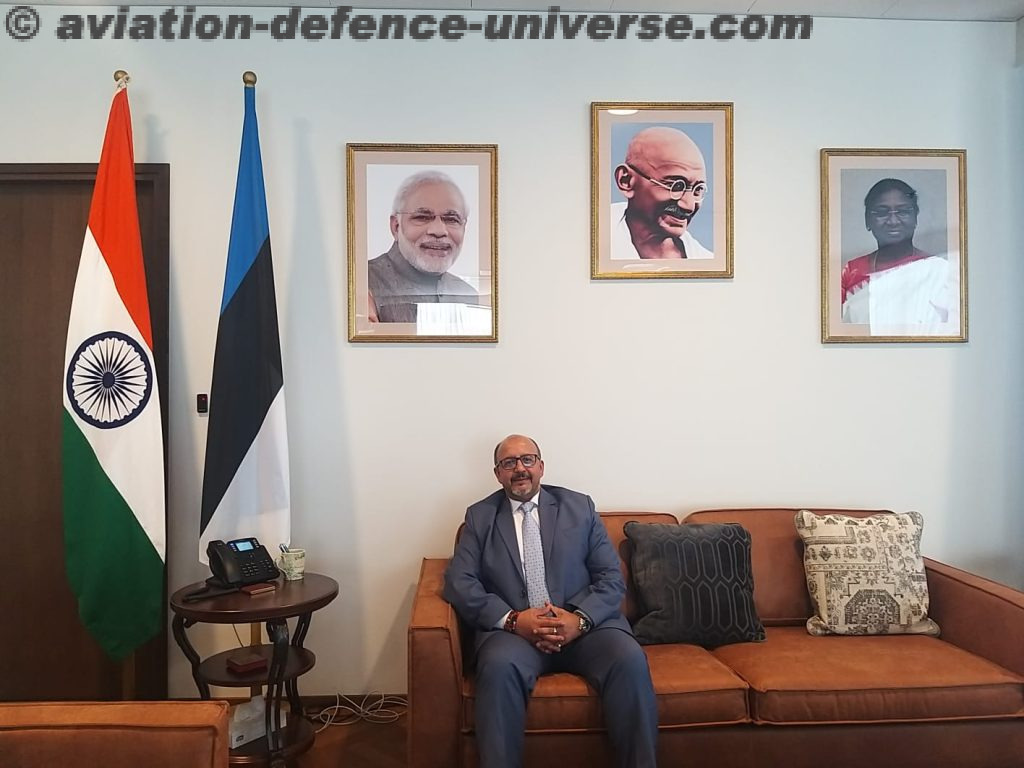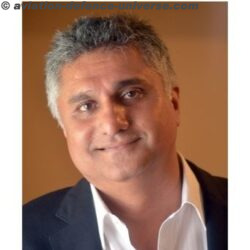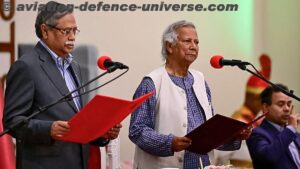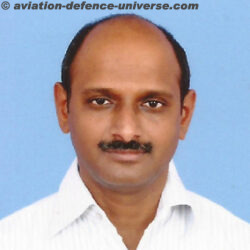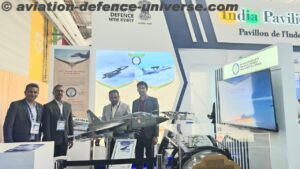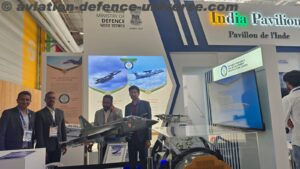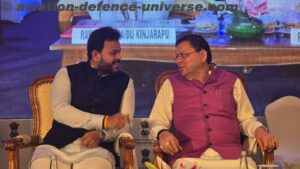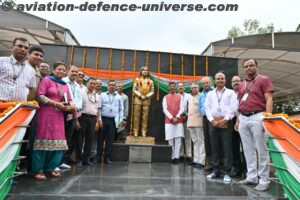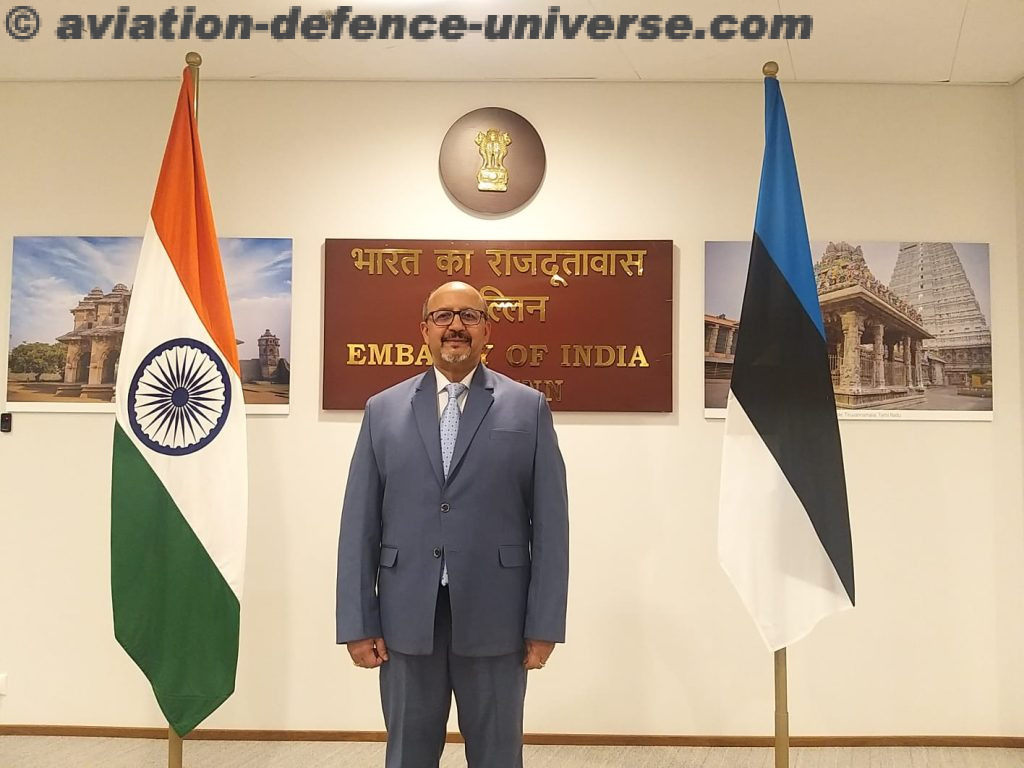
- ADU interviews Indian Ambassador to Estonia
By Sangeeta Saxena
Tallinn, Estonia. 24 May 2024. For a country which shares an eastern border with the Russian regions of Pskov and Leningrad, Estonia is one of the NATO members closest to Russia in terms of geography. Its military is primarily composed of reservist units, with about 4,200 regular personnel and 38,000 reserve soldiers prepared for deployment in times of conflict. Using its Estonian Defence Forces, Estonia has taken part in numerous joint military operations since joining NATO in 2004. Prior to 2004, Estonia had also taken part in military and peacekeeping missions overseen by NATO. Since hostilities in Ukraine began, the security landscape in Europe has significantly changed. NATO has expanded its presence in the Baltic Sea region in concert with its allies in order to guarantee security, bolster collective defence, and strengthen deterrence. And Estonia is suddenly the cynosure of all eyes.
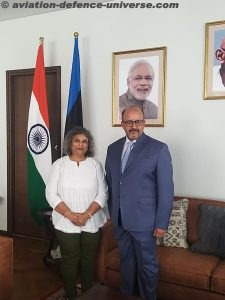
“We established our resident mission in Tallinn at the end of December 2021 when we sent our Charge d’affaires (Cd’A) a. i. here. On 11th of March of 2022 I arrived in this country as the first resident ambassador. Earlier we looked after Estonia from our Embassy in Helsinki. At the outset, let me point out that the basis for the consolidation of our bilateral religions are based on certain fundamentals principles and shared values like rule of law, democracy, pluralistic society, commitment to international order based on multilateralism and international law. The two countries are strong opponents of international terrorism in all its forms and manifestations,” stated Ambassador Ajaneesh Kumar Ambassador of India to Estonia , in an exclusive interview with Editor Aviation & Defence Universe (ADU) Sangeeta Saxena.
ADU. Does historically Estonia merit the position it has in the geo-political arena for that region?
Ambassador Ajaneesh Kumar. You see Estonia as a sovereign country first comes into Global polity in 1918 when it gets its independence. Prior to 1918 they had phases of rule by various people whether it was the Swedish, the Danish, the Baltic Germans, the Russians etc. So for a long time you had an interplay of all these people including the Livonian Order in this part of the world.
On 24th of February 1918 Estonia attained its independence. However it was short-lived as war started with the Soviet Russians and subsequently with the Baltic Germans (Baltische Landeswehr). Estonia emerges victorious in 1920. In 1921, while we were still under the British colonial rule, we recognized Estonia on 22 September 1921, as a sovereign independent country after it joined the League of Nations.
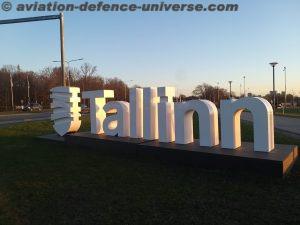 The first Independence period lasted till 1940 when Estonia was invaded by Soviet Union. This was followed by the Nazi rule which lasted till the reoccupation by Soviet Union in 1944. This phase lasted till the Restoration of Estonian Independence on 20th August 1991. India re-recognized Estonia on 9th September 1991 and diplomatic relations were established on 2nd December 1991.
The first Independence period lasted till 1940 when Estonia was invaded by Soviet Union. This was followed by the Nazi rule which lasted till the reoccupation by Soviet Union in 1944. This phase lasted till the Restoration of Estonian Independence on 20th August 1991. India re-recognized Estonia on 9th September 1991 and diplomatic relations were established on 2nd December 1991.
The Indian Embassy in Helsinki Finland had the concurrent jurisdiction of Estonia. Towards the end of 2020, government of India decided to open its resident mission in Tallinn in 2021. However on account of the Covid pandemic this could not happen and the embassy was established only towards the end of December 2022. It may be recalled that the Estonian Embassy in New Delhi headed by a Cd’A was established in February 2012. The first resident ambassador presented credentials on 22nd February 2013.
During the intervening period post its restoration of Independence, Estonia joined some of the major regional and organizations. This starts in the year 1997 when the Estonia rejected the Russian proposal whereby it’s security would have been guaranteed. Estonia decided to opt for the West including the European Union and NATO which it joined in 2004. Subsequently in 2007 it joined the Schengen area.
ADU. Do you see the possibility of a collaboration in the field of defence and security between India and Estonia?
Ambassador Ajaneesh Kumar. Since your prime interest is in the defence area let me tell you that some of the Estonian companies like Milrem and Vegvisir are already working (or in the process) with their Indian counterparts Bharat Forge (Kalyani Group) and MKU Limited respectively. Some others are in a lookout for Indian partners. We have made constant efforts to promote the ‘Make in India’ initiative under which investing companies from abroad including Estonia can benefit from the numerous policy interventions including the foreign direct investment norms and the productivity linked incentives. Moreover, India offers the scale as well as the growing Indian market which a small demography like needs. Factors of productions are still relatively cheaper in India. In addition, new ecosystem of all types are coming into existence with every passing month. In addition to the above, India offers a huge talent pool of young engineers, coders, programmers, technicians etc. R&D as well design & development are well entrenched in the service sector of our country.
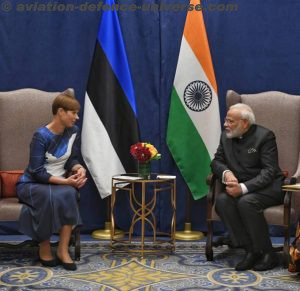
Thus I feel that there is a major scope for India to partner and supply defence equipment including non-lethal equipment to this part of the world including Estonia which is constantly on a lookout for purchase of new inventory to replace its depleted stock. For sure, this has to be in conformity to our existing policies on defence exports. An example is self propelled artillery K9 Vajra which Indian company Larsen & Toubro (L&T) makes using technology transferred from the South Korean company. Estonia has signed a contract for purchase of 24 K9 artillery pieces from South Korea. In fact, I remember reading in the press that Estonia is considering buying more such howitzers. Ammunition of all types could be another area of potential exports from India to EU member countries including Estonia.
Some of the major ones which comes to my mind are Threod Systems (Developes unmanned aerial systems that are used for both civilian and military reconnaissance and surveillance), Baltic Workboats (Builds a variety of ships and patrol boats), Vegvisir (Specializes in advanced situational awareness systems for military and security vehicles) and Milrem Robotics (Specializes in the development of unmanned ground vehicles and robotic warfare solutions). I am aware that I have left out many others areas of Estonian successes considering the time at hand.
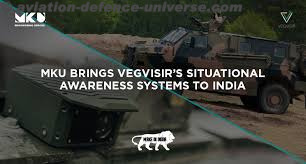 There are quite a few other companies who provide various kinds of inputs to the defence industry. If one was to go by the statistics provided by the Estonian Defence Industry Association, there are roughly 100 companies which are involved in the development and manufacture of technologies and equipments which form fundamental part of the defence ecosystem.
There are quite a few other companies who provide various kinds of inputs to the defence industry. If one was to go by the statistics provided by the Estonian Defence Industry Association, there are roughly 100 companies which are involved in the development and manufacture of technologies and equipments which form fundamental part of the defence ecosystem.
So you see, some of the advanced systems and cutting edge technologies which Estonia has developed can be tapped by Indian defence industry to strengthen our bilateral engagements.
ADU. Are you satisfied with the interaction between the two countries at leadership and governance level for improving bilateral ties?
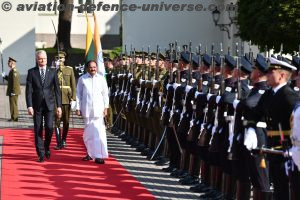
Ambassador Ajaneesh Kumar. The visit of Hon’ble Vice President of India to Estonia in August of 2019 is a major landmark in our bilateral relations. It was the first ever high level visit of an Indian dignitary to Estonia. During the visit, three MoU’s were signed. The commercial delegation accompanying the dignitary also had productive meetings with their Estonian counterparts. The programme also included an engagement with the small diaspora.
Two recent ministerial visits in 2024 have further given the fillip to our bilateral relations. The Minister of Economic Affairs and Information Technology HE Mr Tiit Riisalo, participated in the Vibrant Gujarat Summit 2024 in January. He was accompanied with a business delegation comprising of representatives from Estonian companies Vegvisir, Cybexer Technologies, Gennet Laboratories, Leil Storage, LEI Register, Omniva, Eesti Energia and the technology university, TalTech. The following month, Foreign Minister HE Mr. Margus Tsahkna visited India and participated in the Raisina Dialogue. He was also accompanied by a small business delegation comprising of representatives of Semetron and Estonian Arsenal.

Cyber security is another area where the two countries can collaborate both in the public and private domain. An Estonian company Cybexer, which is a ‘Locked Shield’ (a major annual NATO exercise held in Estonia) certified company, is already working with its Indian partner. There are many more such potentials.
Approximately 200 Indian ICT engineers, programmers and coders are working for many of the Estonian unicorns and soonicorns as well as multinational companies operating in Estonia. Some people also work in the service industry here, mainly in Indian restaurants. There are some Indian students studying in Tartu and Tallinn.
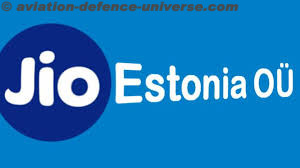 JIO Estonia it is also based here. It is a Reliance industry company and is currently working on advanced telecommunications solutions including 6G. Telecom switching and radio equipments are being supplied to India by the local arm of Ericsson in Estonia. I had the chance to visit the Ericsson facility in Tallinn and meeting with a team of approximately 65 Indian engineers.
JIO Estonia it is also based here. It is a Reliance industry company and is currently working on advanced telecommunications solutions including 6G. Telecom switching and radio equipments are being supplied to India by the local arm of Ericsson in Estonia. I had the chance to visit the Ericsson facility in Tallinn and meeting with a team of approximately 65 Indian engineers.
I can continue speaking on opportunities and prospects in other areas too. Since the interview has already gone too long, let me wind up. In a nutshell, I see immense potential for the two countries to cooperate and collaborate both in the public and private sectors. I am sure, with more people to people contacts, this relationship will continue to grow and prosper bringing the two countries closer.
ADU. And in an era when employment generation is focus of any and every nation, what is Estonian government’s strategy to combat this challenge?
Ambassador Ajaneesh Kumar. Now let me talk a little bit about Estonia’s strengths and achievements which will address your question. Later, I will tell you about our bilateral relations, which too has an economic angle thus contributing (even though small) to the economic growth of both countries.
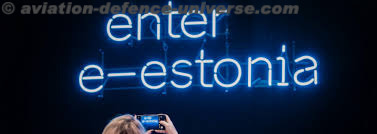 From the very beginning (Project Tiger Leap in 1996 to provide computers and internet access in all schools), Estonia has taken many visionary steps to innovate and adopt digital technology by the masses. It also took timely progressive decisions to make its society completely digital. So while the country has only 1.3 million population, it today boasts of 10 unicorns and many startups. E-governance is a part and parcel of the system where except for divorce all services are offered online. It is true that except for approximately 25% of the population, the rest use digital services whether it is e-school (eKool), e-taxation, internet voting, digital prescriptions as well as signing documents online. There is also a provision of e-Residency to anyone who opt for opening and operating a company in Estonia remotely. Necessary interventions have been made to make the process of registering a company online very streamlined, fast and efficient. Currently, except for divorce, all services can be available online using the Estonian ID.
From the very beginning (Project Tiger Leap in 1996 to provide computers and internet access in all schools), Estonia has taken many visionary steps to innovate and adopt digital technology by the masses. It also took timely progressive decisions to make its society completely digital. So while the country has only 1.3 million population, it today boasts of 10 unicorns and many startups. E-governance is a part and parcel of the system where except for divorce all services are offered online. It is true that except for approximately 25% of the population, the rest use digital services whether it is e-school (eKool), e-taxation, internet voting, digital prescriptions as well as signing documents online. There is also a provision of e-Residency to anyone who opt for opening and operating a company in Estonia remotely. Necessary interventions have been made to make the process of registering a company online very streamlined, fast and efficient. Currently, except for divorce, all services can be available online using the Estonian ID.
Simply put, service industry is the backbone of Estonia’s economy followed by industry. Agricultural sector accounts for less than three percent of the total employment scenario.
Let me take this opportunity to point out that the basis for the consolidation of our bilateral relations are based on certain fundamentals principles and shared values like rule of law, democracy, pluralistic society, commitment to international order based on multilateralism and international law. The two countries are strong opponents of international terrorism in all its forms and manifestations.
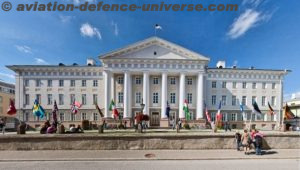
If one is to go by the past then, as per available records, India was known to Estonia in the 18th century. The world famous University of Tartu had Sanskrit studies since 1837. Post re-establishment of diplomatic ties in September of 1991, there has been regular contacts between the two sides. The two countries have a Protocol on Foreign Office Consultations (FOCs) since 1995. So far, 12 rounds of Foreign Office Consultations has been held: the first one in September 2001 while the most recent was held in April 2023. This platform provides us an avenue to take stock of the existing bilateral relations as well as set the goals and timelines for the future.
ADU. Estonia has the ‘maximum internet connectivity in the world’ and it also claims to be the most cyber secure nation. What is your experience of these two ?
Ambassador Ajaneesh Kumar. Estonia’s first-ever unicorn Skype, followed by nine others including Playtech, Wise, Bolt, Pipedrive and Veriff have greatly benefitted from this digitisation efforts. You will often get to hear that Estonia has got the most unicorn companies per capita in the world. Having stayed for over two years in the country, I feel that the government’s initiative to offer e-Residency to anyone in the world has also played an important role in the growth of the unicorns and the start-up ecosystem. The simplified taxation regime, which includes zero corporate income tax policy on reinvested profits, has also been a major attraction.
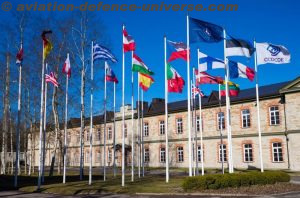 The country has been a leader in blockchain technology. This has led to formation and growth of many cyber security companies viz. Cybernetica (Specializes in secure communication and data exchange systems), Cybexer Technologies (Offers cybersecurity training platforms and cyber capability development), Guardtime (Known for its blockchain-based security layers and data integrity services), RangeForce (Provides cyber readiness training and skills development platforms), Veriff (Focuses on online identity verification services) and SK ID Solutions (Provides digital identity solutions across Estonia and Europe). As you would know, the NATO Cooperative Cyber Defence Center of Excellence in cyber security (NATO CCDCOE) is located in Tallinn. The EU data protection and information security unit EU-LISA is also based in Tallinn.
The country has been a leader in blockchain technology. This has led to formation and growth of many cyber security companies viz. Cybernetica (Specializes in secure communication and data exchange systems), Cybexer Technologies (Offers cybersecurity training platforms and cyber capability development), Guardtime (Known for its blockchain-based security layers and data integrity services), RangeForce (Provides cyber readiness training and skills development platforms), Veriff (Focuses on online identity verification services) and SK ID Solutions (Provides digital identity solutions across Estonia and Europe). As you would know, the NATO Cooperative Cyber Defence Center of Excellence in cyber security (NATO CCDCOE) is located in Tallinn. The EU data protection and information security unit EU-LISA is also based in Tallinn.
ADU. Can India be of help in industry collaboration for manufacturing in Estonia?
Ambassador Ajaneesh Kumar. While it is true that there are not many big manufacturing industries in the country, many Estonian companies have invested in niche technologies. One of such areas is in alternative renewable energy (both GreenTech & CleanTech). Eesti Energia and its subsidiary Enefit are constantly working to find new chemicals using shale and waste materials like shredded used tyres, plastics etc. Harnessing of green energy especially wind power (both onshore and offshore) and use of biofuels have been the focus areas for the Energy Ministry.
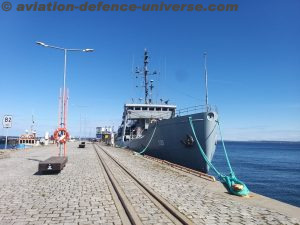 Quite a few companies are providing Financial Services as well as Logistics. Sometime last year, I recall reading about Estonia shortly building its own battery energy storage systems in addition to manufacture of super capacitors and super battery by a local company. There is another energy storage project called ‘Zero Terrain’ which has been announced by the government. Another company will be manufacturing rare earth magnets sometime next year. Forestry and timber industry is also relatively strong in Estonia and contributes both in the economy and employment barometers of the country.
Quite a few companies are providing Financial Services as well as Logistics. Sometime last year, I recall reading about Estonia shortly building its own battery energy storage systems in addition to manufacture of super capacitors and super battery by a local company. There is another energy storage project called ‘Zero Terrain’ which has been announced by the government. Another company will be manufacturing rare earth magnets sometime next year. Forestry and timber industry is also relatively strong in Estonia and contributes both in the economy and employment barometers of the country.
You would have got an idea that there are quite a few opportunities available which Indian companies need to scout for possible cooperation. However, I still believe that it would be more productive for Estonian companies to explore manufacturing, either alone or with an Indian partner (joint venture), under the ‘Make in India’ scheme.
ADU. The Embassies for various nations have a big role to play in developing MSME partnerships between India and different nations is a topic of discussion in India. Is it more of an embassy task than industry’s?
Ambassador Ajaneesh Kumar. Embassies definitely have a role to promote and build economic linkages. We have made constant efforts to promote the ‘Make in India’ initiative under which investing companies from abroad including Estonia can benefit from the numerous policy interventions including the foreign direct investment norms and the productivity linked incentives. Moreover, India offers the scale as well as the growing Indian market which a small demography like needs. Factors of productions are still relatively cheaper in India. In addition, new ecosystem of all types are coming into existence with every passing month. In addition to the above, India offers a huge talent pool of young engineers, coders, programmers, technicians etc. R&D as well design & development are well entrenched in the service sector of our country.
I hope in the coming years we see some concrete MSME partnerships, which will be the requisite beacon for more such engagements in the future.
As told to Sangeeta Saxena



































